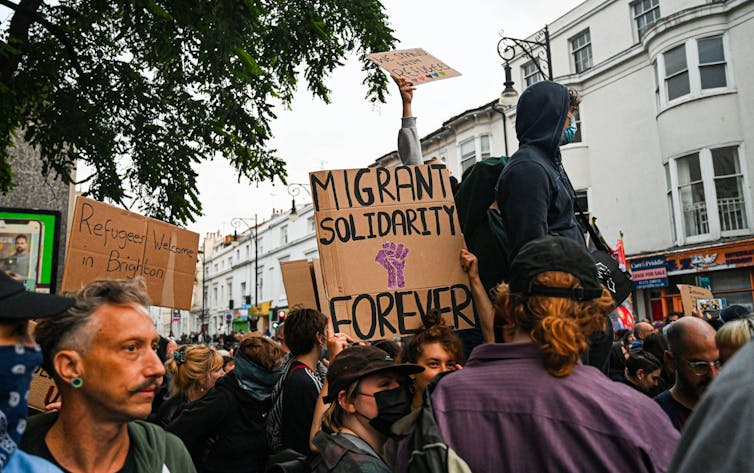When news broke that a 17-year-old male had stabbed a number of young girls in Southport, misinformation swiftly followed. First, that the perpetrator was an asylum seeker or refugee who had come to the UK on a boat. This was discredited and information emerged that the individual was British-born. But the circulation of disinformation, including a fake, Arab-sounding name, led many to argue it must have been a Muslim male.
Though the perpetrator has no known links to Islam, violent, far-right rioters still mobilised to attack mosques. Islamophobic violence spilled onto the streets in the worst race riots Britain has seen in years.
The fact that this misinformation was so readily believed can be partly explained by psychology, and how we think about people who look like us, and about others who don’t.
People are conditioned to identify with their in-group – others who are like them on a range of markers such as race, gender, class or nationality. The maintenance of this shared identity largely requires “us” to be different (meaning better) than “them” by making negative inferences about them.
This automatic psychological response explains how people can see the self and the in-group as complex and fluid (for example, not all white people are criminals) but frame the out-group as homogeneous and fixed. This can lead, as we’ve seen, to some people casting all black men as dangerous, Muslims as terrorists, asylum seekers as opportunistic and refugees as “taking” jobs and healthcare resources, justifying the dislike and even hatred of the out-group.
The racism of this public reaction to a horrific attack on children is stark when you compare it to other recent events.
When a white male killed a 14-year-old black boy named Daniel Anjorin with a sword in May, protesters did not mobilise around the country to “protect children”. Neither were white men as a group deemed a threat to the safety of children.
Whenever crimes, however heinous, are committed by white perpetrators, they are more often viewed as the acts of an individual who was at fault because of mental health issues or falling in with the wrong crowd. There is a long history of disparate treatment of criminals in the media linked to race.
People are socially conditioned to think heinous acts are committed by outsiders. There are a number of cognitive biases at play here, including contextual bias, where decisions are influenced by background information rather than the crime itself, and affinity bias, where people prefer others who are like them.
These biases are present in individual cases, but also across the judicial system. Inequalities in sentencing perpetuate the narrative that people of colour are more dangerous and disposed to crime.
A study commissioned by the Crown Prosecution Service also found that people of colour are significantly more likely to be prosecuted than white people for the same crimes. Such inequity results in overrepresentation in prisons and with convictions. This then feeds the narrative that people of colour are more likely to commit crime – when in fact they are simply more likely to be prosecuted.
The blame game
In times of scarcity, this in-group/out-group bias can become simplified and exacerbated to justify withholding resources from the out-group, who the in-group perceives as “undeserving”. Out-group scapegoats offer an easy and reliable way of deflecting responsibility by those with power.
This is what has happened over the past 14 years in Britain. While the Conservative government created an unstable economic climate and deep poverty through cuts to public services and economic turmoil, it is politically convenient to suggest the reason for scarce resources is a small number of asylum seekers.
The previous government used the negative attitudes towards refugees and immigrants as a core pillar of its election campaign. Politicians used increasingly inflammatory language in relation to immigration, blaming immigrants for things like the housing crisis and depleted health resources as a way shifting attention from their cuts in spending.

Over time, the scapegoats have been boiled down to one homogenised group of people who are not white. This is apparent in the differential treatment of asylum seekers from Ukraine, who were welcomed to the UK and allowed to work and be housed.
Asylum seekers from the rest of the world are not allowed to work on arrival and receive just £49.18 a week. This feeds the narrative that white people work, while people of colour don’t (though somehow are simultaneously “taking our jobs”).
The relentless scapegoating dovetails with the psychological biases we are all socially conditioned to fall for, creating an “us” and “them” environment that can easily turn violent. The events of the past two weeks have awakened much of Britain to the consequences that can arise when society is defined this way.
C. The Conversation

